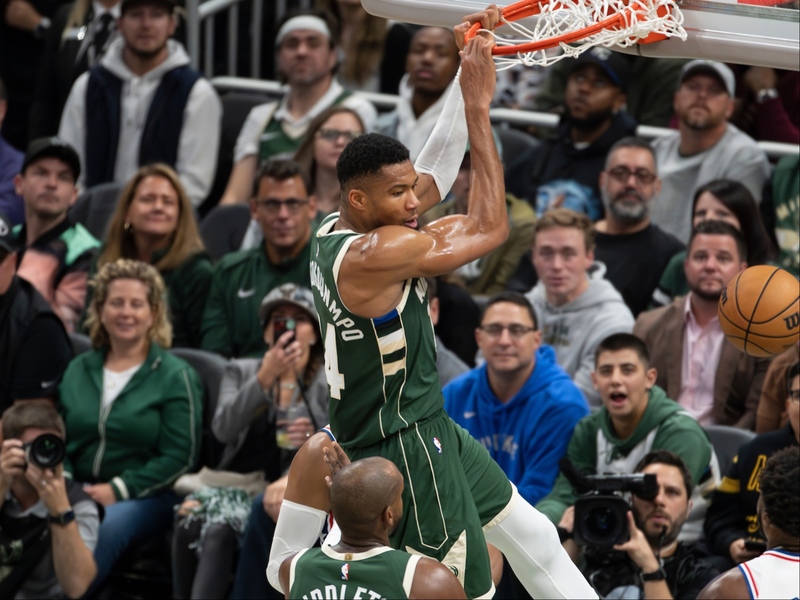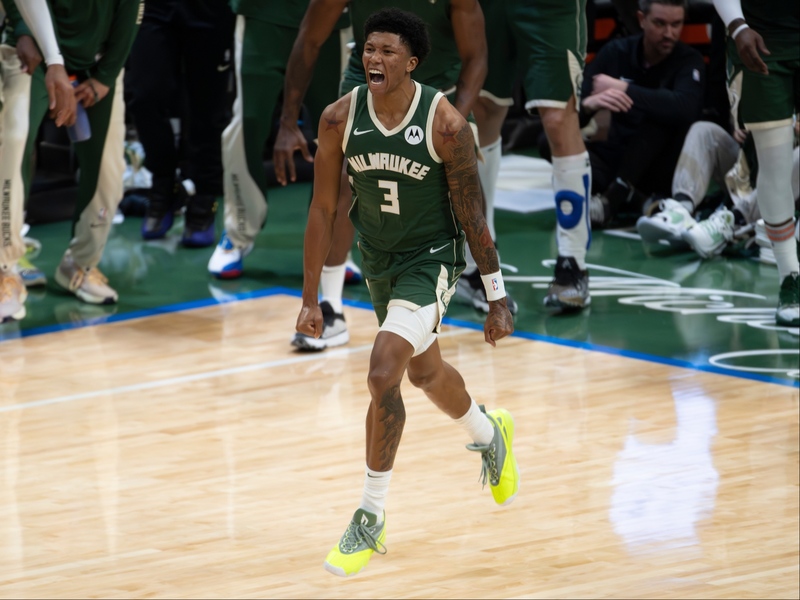When a team sits with a record of 7-30, it’s tough to find any silver linings at that point in an NBA season. It’s difficult to break down individual players, rotations and even the analytics to say "if this was better, the team would be better." When a team loses five straight three different times in the first half of the season, if anything was better – the team would be better.
An even murkier area to wade into is the intangibles, specifically something as nebulous as "energy."
It cannot be measured. It can only be seen, or felt.
Yet, first year Milwaukee Bucks head coach Larry Drew has done just that on several occasions this season:
He apologized to the fans of the team following a 24-point loss to Charlotte on Nov. 23, saying he expected the team to play with a heightened energy level. To him, they did not.
In a loss to the San Antonio Spurs on Dec. 11, veteran beat reporter Charles Gardner noticed that the Bucks lacked a bit of intensity, though Drew didn’t specifically say as much in Gardner’s story.
Then, three days later, Drew added to that by saying the team "laid an egg" with a low energy output following a 13-point loss to the Dallas Mavericks.
On Jan. 7, following a 21-point loss to Golden State, Drew once again wondered where the energy was.
"When you need energy, it’s a total team thing," point guard Brandon Knight said after the loss to Golden State. "You can’t have one or two guys that bring the energy. It has to be all five guys that are on the court. I just think we have to do a better job of making sure that it’s just not one or two guys, that we have everybody playing it has much energy as you can."
A common theme in the four losses that the team lacked vitality was the struggles coming out of halftime.
In the loss to Charlotte, the Bucks scored just 12 points in the third quarter. They scored 14 against San Antonio on Dec. 11, 20 against Dallas on Dec. 14 and 20 against Golden State last week. In those games, the Bucks were outscored by a combined 54 points in the third quarter.
In fact, the Bucks have struggled to put the ball in the basket coming out of halftime all year long.
The Bucks have outscored their opponents just 13 times this year in the third quarter. In those games, the Bucks have scored a combined 57 more points than their opponent – which isn’t much – but they have gone 6-7 in those games.
Now, say what you want about how unscientific that bit of math is, but when a team only has seven wins – and six have come when the team has outperformed an opponent in the third quarter – you can argue it’s the safest way predict whether this team, in this season, will have a successful outcome when the final buzzer sounds.
Conversely, the two times the Bucks have played opponents to a draw in a third quarter, they have lost both games.
In the other 22 games, all losses, the Bucks have been outscored in the third quarter by 186 points (615-429), or 28 to 19.5 points in the frame.
For a team that is right in the middle of the pack defensively (15th in points allowed at 100.5 per game), "losing" a quarter by nearly 10 points definitely cuts the margin for error for a team that is second from the bottom in scoring at 91.7 points per game.
It’s been frustrating for the Bucks, since, as Larry Sanders says, it’s the one part of the game they have complete control over. But even he isn’t sure why there is a drop off in that department coming out of the half.
But, he does know that the end result isn’t good when that dip happens.
"I don’t know if it’s the break," Sanders said. "When you don’t come out with energy in the NBA, guys are going to capitalize. They start to gain momentum and energy in their favor going into the fourth quarter, and then time runs out."
Jim Owczarski is an award-winning sports journalist and comes to Milwaukee by way of the Chicago Sun-Times Media Network.
A three-year Wisconsin resident who has considered Milwaukee a second home for the better part of seven years, he brings to the market experience covering nearly all major and college sports.
To this point in his career, he has been awarded six national Associated Press Sports Editors awards for investigative reporting, feature writing, breaking news and projects. He is also a four-time nominee for the prestigious Peter J. Lisagor Awards for Exemplary Journalism, presented by the Chicago Headline Club, and is a two-time winner for Best Sports Story. He has also won numerous other Illinois Press Association, Illinois Associated Press and Northern Illinois Newspaper Association awards.
Jim's career started in earnest as a North Central College (Naperville, Ill.) senior in 2002 when he received a Richter Fellowship to cover the Chicago White Sox in spring training. He was hired by the Naperville Sun in 2003 and moved on to the Aurora Beacon News in 2007 before joining OnMilwaukee.com.
In that time, he has covered the events, news and personalities that make up the PGA Tour, LPGA Tour, Major League Baseball, the National Football League, the National Hockey League, NCAA football, baseball and men's and women's basketball as well as boxing, mixed martial arts and various U.S. Olympic teams.
Golf aficionados who venture into Illinois have also read Jim in GOLF Chicago Magazine as well as the Chicago District Golfer and Illinois Golfer magazines.







